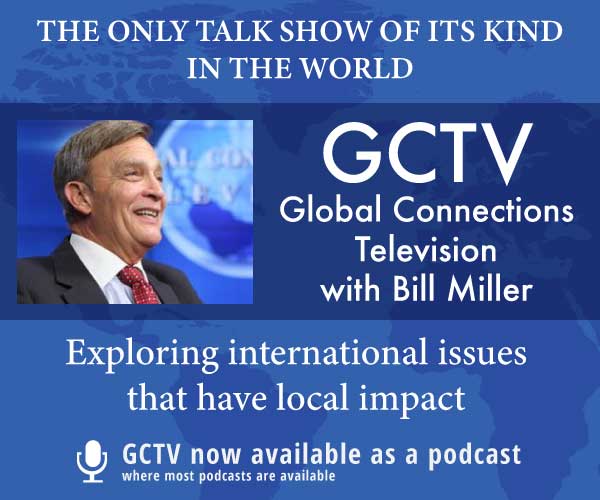
OXFORD, England — The United Nations is going through one of its many difficult periods — so far as its central task of maintaining international peace and security is concerned. In Syria since 2011 and Ukraine since 2014, the Security Council has been unable to take decisive action on momentous issues, including the taking of territory and the protection of civilians. This situation leads many observers to cynicism or even despair about the organization.
Perhaps a better response might be to recognize that from the very start in 1945, the UN has been a system of selective security. It could not tackle, let alone solve, all security problems.
The UN is often supposed to be, at least in embryo, the hub of a system of “collective security.” Yet even at the best of times, for example in the late 1980s and early 1990s, it never matched up to the widely agreed meaning of that term. The term “collective security,” which has a long lineage, is not mentioned in the Charter. It normally refers to a system, regional or global, in which each state accepts that the security of one is the concern of all, and agrees to join in a collective response to threats to and breaches of the peace.
That is not what we have, as reflected in the actual practice of the UN, and it is not even quite what the Charter envisages.
The Charter’s overall approach is well known: on the one hand, to establish a system with certain elements of collective security, and on the other, to preserve the right of states to individual or collective self-defense, at least until the Security Council has taken necessary measures. The Charter also contains some striking departures from a collective security system. The most important is Article 27, giving each of the five permanent members of the Security Council a veto power (Britain, China, France, Russia and the United States). This ensures that collective security measures cannot be used against any of the five, or indeed against a close ally.
The veto has, of course, been challenged. The General Assembly’s Uniting for Peace resolution of Nov. 3, 1950, states that when the Council fails to act, the General Assembly is authorized to “make appropriate recommendations to Members for collective measures.” In theory, this modified the veto’s effectiveness, but the practice has been strikingly different and notably modest, Dominik Zaum wrote in the book “The United Nations Security Council and War.”
The UN Charter system, from 1945 to now, is one in which a global organization of general competence has been superimposed on an older system of states, with neither trumping the other. This dual system poses particular problems for states — especially the United States — that see themselves as destined to play a major military role both for the UN and for the system of alliances that has evolved since 1945.
The most remarkable feature of the UN, distinguishing it from all its predecessors, is how often it has agreed on action in security-related matters:
- 69 peacekeeping operations, of which 56 set up since 1988, many of them authorized to use force in circumstances going beyond self-defense of the force itself
- More than 25 sanction regimes
- More than 30 authorizations to states and coalitions, not under UN command and control, to engage in military operations
In earlier centuries, advocates of collective security imagined that international action to enforce the common purpose would be uncontroversial. Yet in the UN era, all three of these types of action have differed significantly from the collective security vision, and many have given rise to intense disagreements.
Regarding enforcement operations, the Security Council, recognizing political realities, has never required all member states to take part in military action: instead, all UN-authorized uses of force have been coalitions of the willing, or the more-or-less willing. Moreover, all types of UN-approved security actions have involved controversies. Some (as during the Korean War) have been about whether the coalition leader had interpreted the UN mandate too broadly. Some (as in the wars in former Yugoslavia) were about the competence and willingness of those in New York to support operations properly, even on weekends.
Some were about the mandate being too restrictive. Some related to the involvement of UN peacekeeping forces in war crimes, sexual abuse and unintended disasters, such as the cholera outbreak that has killed more than 9,000 people in Haiti since it began in October 2010.
In the present century, the UN has placed increased emphasis on protection of civilians in war, but this subject has proved intensely controversial, too. The doctrine of Responsibility to Protect, now marking its 10th year, has encountered serious trouble, mostly because Syria is a case from hell as far as implementation of the doctrine is concerned.
More generally, a difficulty in advocating for physical protection of endangered people is that it tends to involve a degree of reliance on outside powers and alliances as well as local forces — even on a party to a conflict. The report of the panel on UN Peace Operations, issued in 2015 and chaired by José Ramos-Horta, a Nobel Peace Prize winner and former special envoy for the UN, addresses protection of civilians and makes important proposals, but disappointingly restricts its discussion to actions by UN peace operations themselves.
Even then, it does not cite certain effective cases of protection, including the UN rapid reaction force. This was a part of the deeply problematic UNPROFOR (UN Protection Force) peacekeeping operation. In the summer of 1995, the rapid reaction force was formed and deployed outside Sarajevo, and by putting military pressure on the Serbian forces it helped to end the three-year siege of the city. It was probably the UN’s most successful use of force for civilian protection.
The Ramos-Horta report misses the complexity of the civilian protection task — especially the need to be selective and even to take sides. On the panel, the most serious divisions focused on the use of force: this helps to explain the report’s disappointingly cautious approach and language on this issue.
The selectivity regarding the use of force outlined in this essay has many distinct forms. Four obvious ones are:
- Selectivity of the Security Council, and especially of the permanent five, in deciding which issues to address or not address, and in determining which of many possible actions to take and which side to back
- Selectivity of all UN member states regarding their willingness to provide military and material resources for Council-mandated operations
- Selectivity of states involved in a conflict about whether they wish the conflict to be addressed by the Council
- Selectivity of all the above actors in choosing whether to handle an issue through other organizations, whether regional or global
In public debates, the issue of selectivity is often discussed exclusively on the Security Council, and exclusively in a negative light. It is closely associated with accusation of hypocrisy and double standards by the major powers. These debates will inevitably continue in the present bleak times.
It may be useful to recognize, however, that selectivity is the essence of the UN system. A frank recognition not only of the inevitability of selectivity, but also of its multifaceted character, is a necessary basis for constructive international debate about how the Security Council can demonstrate its relevance and legitimacy in the troubled international politics of the 21st century.
This essay is adapted from a presentation by the author at the Ralph Bunche Forum at the City University of New York Graduate Center on Feb. 9, 2016, and based on the author’s chapter in “The UN Security Council in the 21st Century,” published in 2016 by Lynne Rienner.
Sir Adam Roberts is senior research fellow in international relations at Oxford University. He was president of the British Academy from 2009–2013, and the author and editor of numerous articles and books, including “The United Nations Security Council and War: The Evolution of Thought and Practice Since 1945,” published by Oxford University Press. His latest edited book is “Civil Resistance in the Arab Spring: Triumphs and Disasters,” Oxford University Press, 2016.
A presentation he made at the Ralph Bunche Forum in New York in February 2016 was based on his chapter, “The Use of Force: A System of Selective Security,” from “The UN Security Council in the 21st Century,” edited by Sebastian von Einsiedel, David M. Malone and Bruno Stagno Ugarte and published by Lynne Rienner, 2016.













This is all selective game of the big guns.
The war mongers will not let the peace established in the third world including the middle east where millions of people are force to leave their homes.Where is the UN by the way.